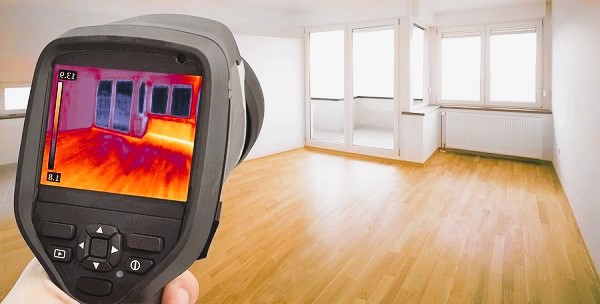Windows play a significant role in the thermal performance of a home, affecting its energy efficiency and overall comfort. By understanding how windows impact heat transfer, homeowners can make informed decisions when it comes to selecting, upgrading, or maintaining their windows. In this article, we will explore the factors that contribute to the thermal performance of windows and their implications for home heating.
- Heat Transfer through Windows
Heat transfer through windows occurs through three primary mechanisms: conduction, convection, and radiation. Conduction refers to the direct transfer of heat between materials with different temperatures. In the case of windows, heat can conduct through the glass, frame, and any other components. Convection involves the movement of air currents around the window, which can result in heat loss or gain. Radiation refers to the transfer of heat through electromagnetic waves between objects with different temperatures.
- U-Factor and R-Value
To quantify the thermal performance of windows, two commonly used metrics are the U-factor and R-value. The U-factor measures the rate of heat transfer through a window, with lower U-factor values indicating better insulation. It represents the inverse of the window’s insulation ability, meaning that a lower U-factor corresponds to higher insulation. The R-value, on the other hand, measures the resistance to heat flow, with higher R-values indicating better insulation. The R-value is the reciprocal of the U-factor and is often used in building codes and energy efficiency calculations.

- Window Glazing Options
Window glazing, the glass component of a window, plays a crucial role in its thermal performance. Single-pane windows provide minimal insulation and are the least energy-efficient option. Double-pane windows feature two layers of glass separated by a sealed air or gas-filled space, providing improved insulation compared to single-pane windows. Triple-pane windows offer even higher insulation by adding an extra layer of glass and two air or gas-filled spaces. The number of panes and the type of gas filling influence the U-factor and overall thermal performance of the window. Read also the article about Revolutionizing home heating with smart thermostats.
- Low-E Coatings
Low-emissivity (Low-E) coatings are thin, virtually invisible layers applied to window glass to reduce heat transfer. These coatings reflect infrared light while allowing visible light to pass through, thereby reducing heat gain in the summer and heat loss in the winter. Low-E coatings can significantly improve the energy efficiency of windows and contribute to a more comfortable indoor environment.
- Window Frames and Insulation
In addition to the glazing, window frames also impact the thermal performance of windows. Frames can conduct heat, which can contribute to energy loss or gain. Common window frame materials include wood, vinyl, aluminum, and fiberglass. Each material has different thermal properties, with some offering better insulation than others. Proper insulation and sealing around window frames are also crucial to prevent air leakage, which can lead to energy loss and drafts.
- Solar Heat Gain
Solar heat gain refers to the amount of heat that enters a building through windows due to solar radiation. While natural sunlight can provide warmth and natural lighting, excessive solar heat gain can lead to overheating and increased cooling needs, especially in warmer climates. Proper window placement, shading devices, and the use of low-emissivity coatings can help manage solar heat gain and improve overall energy efficiency.
- Window Orientation and Climate Considerations
The orientation of windows in relation to the sun’s path can impact their thermal performance. South-facing windows receive more direct sunlight throughout the day, providing natural heat gain in colder climates. North-facing windows, on the other hand, receiveless direct sunlight and are more prone to heat loss. East and west-facing windows experience varying degrees of solar heat gain and heat loss depending on the time of day. Understanding the sun’s path and the specific climate of your location can help optimize window placement and maximize the benefits of natural heating and cooling.
- Energy Efficiency Labels and Standards
Energy efficiency labels and standards provide valuable information about the thermal performance of windows. Organizations such as ENERGY STAR® and the National Fenestration Rating Council (NFRC) establish criteria and testing protocols to evaluate and rate windows based on their energy efficiency. These labels provide consumers with a standardized way to compare the thermal performance of different windows and make informed purchasing decisions.
To learn more about the field of window technology and its standardization efforts, you can refer to the relevant Wikipedia page on windows: Wikipedia – Windows.
- Window Maintenance and Upgrades

Regular maintenance and periodic upgrades can help improve the thermal performance of windows. Ensuring proper sealing and weatherstripping around windows can reduce air leakage and prevent drafts. Upgrading to more energy-efficient windows, such as double-pane or triple-pane options with Low-E coatings, can provide significant improvements in insulation and energy efficiency. Consult with professionals in the window industry to determine the most suitable upgrades for your specific needs and budget.
- Integrated Approach to Home Heating Efficiency
Understanding the thermal performance of windows is essential for maximizing overall home heating efficiency. By considering windows as part of an integrated approach to energy efficiency, homeowners can make informed decisions about insulation, heating systems, and window treatments. Utilizing smart home technologies, such as smart thermostats and automated window coverings, can further optimize energy usage and enhance thermal comfort.
In conclusion, understanding the thermal performance of windows is crucial for homeowners seeking to improve energy efficiency and thermal comfort in their homes. By considering factors such as U-factor, R-value, window glazing, low-emissivity coatings, and solar heat gain, homeowners can make informed decisions about window selection, maintenance, and upgrades. By taking a comprehensive and integrated approach to home heating efficiency, homeowners can reduce energy consumption, lower utility costs, and create a more comfortable living environment.
